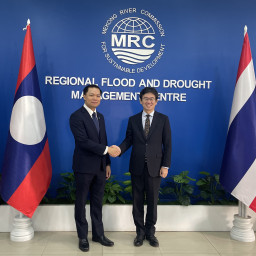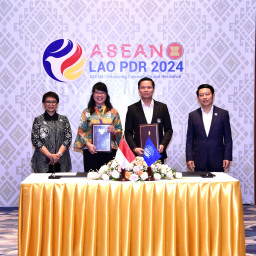FAO recognizes MRC fisheries valuation research
Vientiane, Lao PDR, 14 August 2018 – The Food and Agricultural Organization of the United Nations (FAO) has acknowledged work by the Mekong River Commission (MRC) to estimate the economic value of inland fisheries in the lower Mekong basin.
In an update to a periodic circular released in late July, the FAO estimated the economic value of the world’s inland fish catches — as reported to the UN agency — at US$26 billion with two thirds coming from Asia and most of the rest from Africa.
“We’re pleased to see our work is being recognized. For more than two decades, we’ve kept the public updated on what’s happening in fisheries in the region and provided advice on the key issues and threats through in-depth scientific studies and technical reports directed at a specialized audience of fisheries and water managers, scientists and policy-makers,” MRC CEO Pham Tuan Phan said.
The circular, first published in 1999, acknowledged that a “significant proportion” of inland catches are unreported, although better reporting by some FAO member countries over the past few years probably reduced this “hidden” part of the catch.
“Including this hidden component gives a projected estimate of the total use value of inland fisheries of US$38.53 billion. This value is increased to US$43.53 billion if the value of freshwater mollusks and crustaceans is included,” it said.
In an overview of past attempts to compute the value of inland fisheries, the FAO circular highlighted seven regional studies in Africa, the Americas, Asia, Europe and Oceania along with three sub-regional studies in the United States and China.
Three regional studies in Asia covered the Mekong River Basin, with an MRC study in 2015 being the most recent and the most up-to-date of all 10 studies selected.
This MRC study — conducted by Cambodian, Lao, Thai and Vietnamese fisheries officers of the former MRC fisheries program over a one-year period — estimated the economic value of fish catches in the lower Mekong basin at about US$11 billion in 2015.
The first update to the FAO circular since 2011 noted that the MRC study covered 67 fish species across 14 landing points in the four MRC member countries.
“Importantly, the revenues generated from aquaculture in the lower Mekong basin were much lower (US$5.8 billion), highlighting the relative importance of inland fisheries in the Mekong subregion,” it said. This was despite the “massive contribution” from the farming of striped catfish (Pangasianodon hypophthalmus) in the Mekong Delta in Viet Nam.
The lower Mekong basin inland fisheries are the world’s largest fisheries, with an estimated yield of 4.4 million tons per year. More than 40 million people — two-thirds of the population of the LMB — are actively involved in fisheries. Fisheries provide between 50-80% of the animal protein for the basin’s population. They account for 18% of Cambodia’s GDP and contributes more to the country’s economy than rice production. In Lao PDR, the fisheries value is equivalent to nearly 13% of the country’s GDP. Although proportionally less significant to the national economy, the Mekong fisheries sectors in Thailand and Viet Nam add well over US$5,500 million to their GDP each year.
The 376-page update to FAO Fisheries and Aquaculture Circular No. 942 can be downloaded by clicking here.
The MRC study, published in the Commission’s regular newsletter Catch and Culture on fisheries research and development in the region, can also be found here.
-END-





